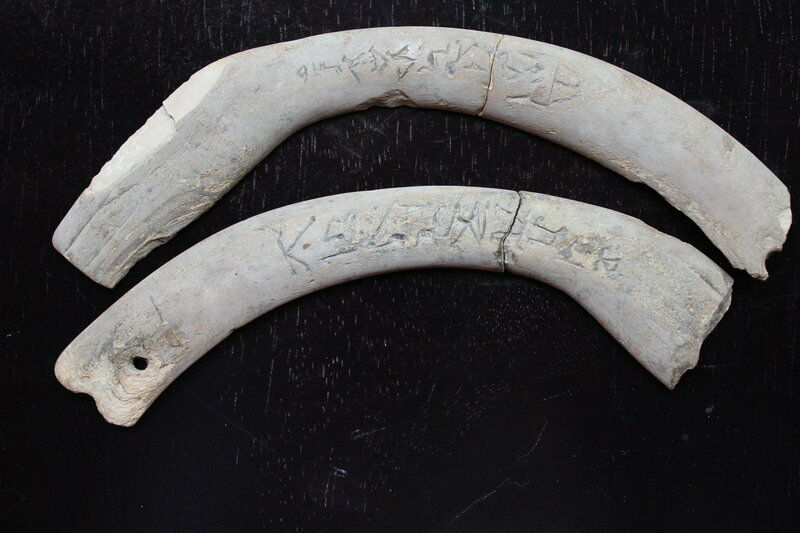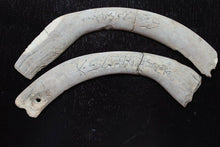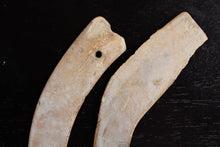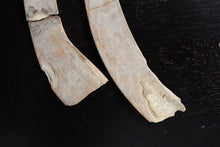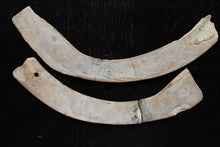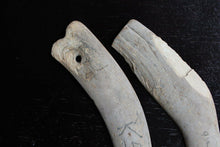Ancient Egyptian Clappers, Old Kingdom 2649–2150 BC Ex Gustave Jéquier 1868-1946
Regular price
$7,500.00
Sale
Here you find two Egyptian clappers, they would have been joined at the end opposite the hands (similar to castanets) and were used as a musical instrument. Clappers were often played together with Sistra (stock# GD-407), Harps and Pipes. The curved shape of the clappers shows that they were made from hippopotamus tusks sawn in two down the centre. Holes in each of the upper portion would allow for a cord to hold the two clappers together however in this example one of the holes is missing. One of these clappers appears to be carved in the shape of a hand which is typical. In ancient Egypt music was an important part of festivals and banquets, often accompanied by singing and dancing. The noise of clapping and banging was also thought to drive away evil forces or dangerous spirits. Evidence can be seen in pre-historic rock drawings of dancing figures and fourth millennium BC. images on pottery in Egypt, seem to show curved-blade clappers held in one hand. These clappers measure 7 inches in length.
Ex. Billy Jamieson Collection, 2009 (1954-2011)
Provenance: Collected by Gustave Jéquier (1868-1946)
Authentication: Gayle Gibson, Royal Ontario Museum Toronto
For referenced see: G. Pinch, Magic in Ancient Egypt (London, The British Museum Press, 1994)
Galleria Delvecchio .… “is pleased to present a collection of Egyptian antiquities assembled by the celebrated Swiss Egyptologist Gustave Jéquier. Jéquier was born in 1868 in Neuchatel. He first studied in Paris under Gaston Maspero (1846-1916) and later went to Berlin before joining the de Morgan expedition to Persia, during which time he contributed to the discovery and decipherment of the code of Hammurabi. Gustave Jéquier was a giant in the field of Egyptology whose contributions are far too numerous to list here. He is best known for his association with the French Institute in Cairo which enabled him to engage in seminal research at the pyramid site of the Old Kingdom. He also completed the work begun at Abydos by his Swiss compatriot, [Henri] Eduard Naville (1844-1926). The two are considered to be Switzerland’s most preeminent Egyptologists. One of Jéquier’s most important discoveries was the 13th Dynasty pyramid of Khendjer. He wrote extensively on his history of Egyptian architecture, and published on philology and religion as well. Gustave Jéquier died in 1946 in the city in which he was born, and most of his collection was acquired by the University of Basel. The works of art presented here were given to a sibling who emigrated to the US in the late 1940’s; the collection later passed to their daughter, Jéquier’s niece.”
